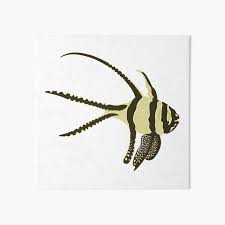Dragons in Chinese Art Depicting Nature and the Cosmos
Throughout Chinese history, the dragon has been a central figure in mythology, religion, and art. Unlike Western dragons, which are often depicted as fierce and destructive, Chinese dragons are benevolent and powerful creatures, symbolizing wisdom, cosmic balance, and the forces of nature. Their connection to natural elements—such as water, wind, fire, and celestial bodies—has made them a dominant motif in artistic representations of the natural world and the universe.
This article explores the role of dragons in Chinese art as they relate to nature and the cosmos, examining their symbolism, presence in different art forms, and their influence on cultural perceptions of the natural and celestial realms.
I. The Symbolism of Dragons in Chinese Art
1. The Cosmic Dragon and Universal Balance
In Daoist and Confucian traditions, the universe is governed by the balance of opposing yet complementary forces known as yin and yang (阴阳). Dragons are often depicted in artistic works as celestial beings that maintain this balance, symbolizing harmony between heaven and earth.
- The dragon and phoenix: The dragon, representing the male principle (yang), is often paired with the phoenix, which embodies the female principle (yin). Together, they signify universal equilibrium, prosperity, and marital harmony.
- The dragon’s connection to the Five Elements (五行, Wǔxíng): In Chinese cosmology, dragons are associated with water, wood, fire, earth, and metal, each influencing different aspects of nature and human life.
2. The Dragon as a Guardian of the Heavens
Dragons frequently appear in Chinese artistic depictions of the sky and celestial bodies. In ancient beliefs, they were seen as divine creatures that controlled the weather, guided the stars, and ensured cosmic order.
- The Azure Dragon (青龙, Qīnglóng): This celestial dragon is one of the Four Symbols (四象, Sì Xiàng) of Chinese mythology, representing the east, the spring season, and the element of wood.
- Dragons and constellations: Chinese star maps often include dragon-like shapes within the celestial patterns, showing their connection to astrological beliefs and cosmic navigation.
II. Dragons in Traditional Chinese Landscape Paintings
1. The Dragon and Mountains in Chinese Art
Traditional Chinese landscape paintings, known as “shan shui” (山水, “mountain and water”), often incorporate dragon imagery hidden within natural scenery.
- Mountains as sleeping dragons: Many Chinese paintings and poems describe mountains as resting dragons, their undulating ridges forming the dragon’s back. This idea reflects the belief that dragons bring vital energy (气, qì) to the land.
- Clouds and mist as the dragon’s breath: In landscape art, mist rolling through valleys is often likened to the breath of a dragon, reinforcing its mystical presence in nature.
2. The Dragon and Water in Chinese Art
Chinese mythology describes dragons as rulers of the seas, rivers, and lakes. This connection is vividly expressed in traditional art forms, where dragons are often shown emerging from turbulent waves or resting beneath the surface of water bodies.
- The dragon in river paintings: Many ancient Chinese scrolls depict dragons hiding beneath flowing rivers, symbolizing their control over water and their role as bringers of rain.
- The dragon and the tides: Some artistic works depict dragons rising with ocean waves, representing the belief that they influence tidal movements and storms.
III. Dragons in Chinese Celestial Art and Astronomy
1. Dragons as Cosmic Navigators
Chinese astrology and astronomy are deeply linked with dragon symbolism. Ancient astronomers believed that dragons influenced the movement of celestial bodies, and many early star charts included dragon-like shapes.
- Lóng Tiān (龙天, “Heavenly Dragon”): This concept refers to the dragon’s presence in the celestial realm, where it is believed to control the movement of stars and the lunar cycle.
- The dragon and eclipses: In ancient China, people believed that solar and lunar eclipses were caused by a celestial dragon devouring the sun or moon. Artistic depictions of these events often featured dragons chasing or swallowing celestial orbs.
2. Dragons in Daoist and Buddhist Art
Both Daoist and Buddhist traditions in China have integrated dragons into their celestial imagery.
- Daoist dragon paintings: In Daoist art, dragons often appear alongside deities, symbolizing their divine connection to the natural and cosmic worlds.
- Buddhist dragon guardians: Many Buddhist temples feature dragon motifs, representing protection, wisdom, and enlightenment. Some legends describe dragons guarding sacred texts or serving as divine messengers.
IV. Dragons in Imperial Art and Architecture
1. The Dragon as the Emperor’s Cosmic Connection
During the imperial era, Chinese emperors were considered the “Sons of Heaven” (天子, Tiānzǐ) and were often associated with dragons. Imperial art frequently depicted dragons in ways that linked the ruler to cosmic forces.
- The Five-Clawed Dragon: The imperial dragon, distinct from other dragons, had five claws and was exclusive to the emperor. It symbolized the ruler’s divine authority and cosmic connection.
- Dragon-adorned palaces: The Forbidden City in Beijing features thousands of dragon motifs in murals, roof tiles, and sculptures, reinforcing the emperor’s celestial power.
2. The Dragon and the Forbidden City’s Cosmic Design
The Forbidden City itself is designed in accordance with Feng Shui principles, with dragons playing a central role in its artistic and architectural details.
- The dragon throne: The emperor’s throne was often called the Dragon Throne (龙椅, Lóng Yǐ), representing his supreme rule over heaven and earth.
- Celestial dragon motifs: The palace ceilings feature paintings of dragons soaring among clouds, symbolizing the emperor’s divine governance over natural and cosmic elements.
V. Dragons in Modern Chinese Art and Popular Culture
Even in modern times, Chinese artists continue to incorporate dragon imagery into their works, blending traditional themes with contemporary styles.
1. Dragons in Contemporary Chinese Art
- Modern painters often reinterpret dragon motifs using abstract techniques, emphasizing their symbolic connection to nature and the universe.
- Calligraphy artists use dragon-like strokes to create flowing, dynamic representations of energy and movement.
2. Dragons in Cinema and Digital Art
- Films such as Hero (2002) and Crouching Tiger, Hidden Dragon (2000) use dragon symbolism to convey themes of destiny and cosmic order.
- Digital artists create futuristic dragon designs, blending mythology with science fiction concepts.
Conclusion: The Eternal Presence of Dragons in Chinese Art
From ancient scroll paintings to modern digital designs, dragons have maintained a vital presence in Chinese artistic expressions of nature and the cosmos. As guardians of the heavens, rulers of water, and symbols of universal harmony, they continue to inspire awe and reverence. Their legacy in art and culture reflects the deep connection between mythology, spirituality, and humanity’s understanding of the natural world.
Whether hidden in mountain landscapes, soaring in celestial depictions, or guarding imperial palaces, the dragon remains one of the most enduring and dynamic symbols in Chinese artistic traditions.


